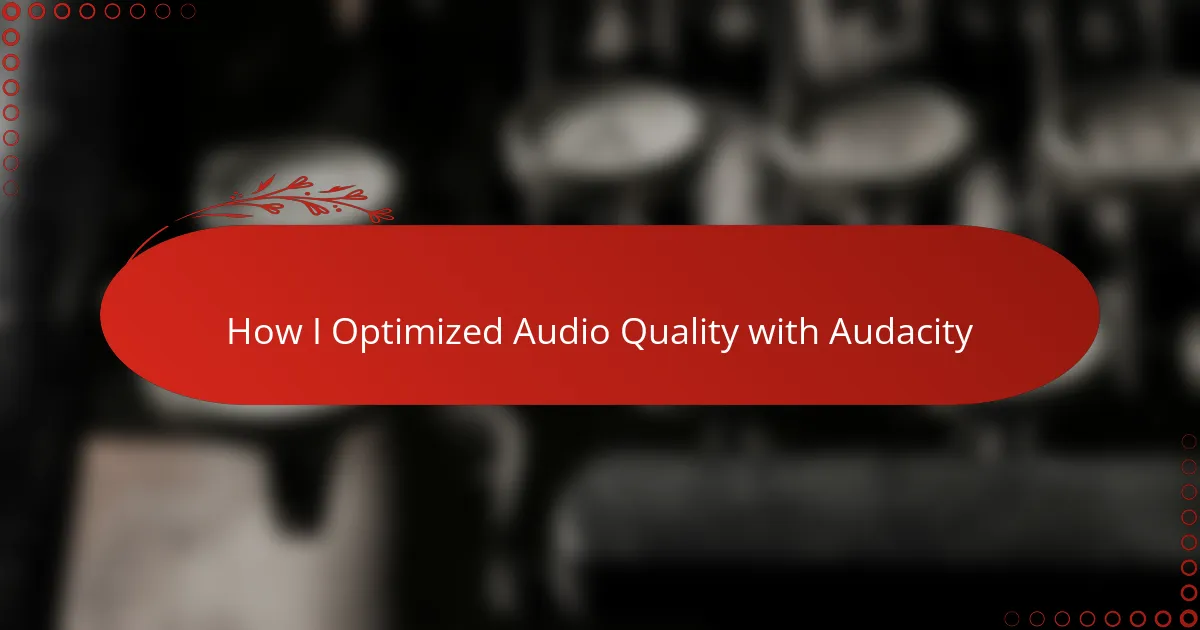Key takeaways
- Audio quality is crucial in radio broadcasting, influencing listener engagement and connection.
- Using Audacity effectively enhances audio through noise reduction, equalization, and compression for a professional sound.
- Setting up recording preferences correctly lays a strong foundation for sound quality, impacting the overall listening experience.
- A structured workflow focusing on careful editing and balancing authenticity and clarity improves the emotional impact of broadcasts.
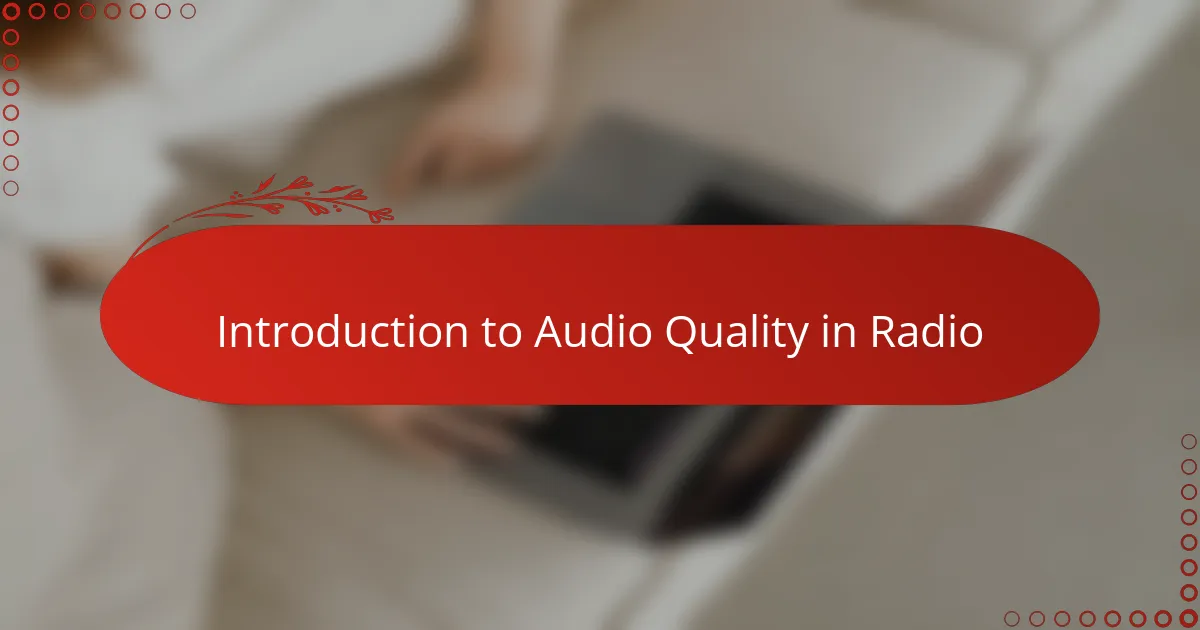
Introduction to Audio Quality in Radio
Audio quality in radio isn’t just about crisp sound—it’s the heartbeat of the listener’s experience. When I first started tinkering with broadcasts, I quickly realized how much a clear, well-balanced audio track can captivate an audience or, conversely, send them tuning out. Have you ever caught yourself switching stations because the sound felt off? That subtle irritation often comes down to poor audio quality.
In radio, every nuance matters—from the warmth of a voice to the clarity of music between segments. It’s not just technical; it’s emotional. I’ve found that when I focus on enhancing audio clarity, it deepens the connection with listeners, almost like having a genuine conversation rather than a distant announcement.
Getting this right is a continuous challenge because the environment, equipment, and even internet streaming can affect sound quality. But that’s what makes improving it so rewarding. How often do we consider the effort behind that perfect audio moment? For me, understanding this is the first step to truly mastering radio broadcasting.
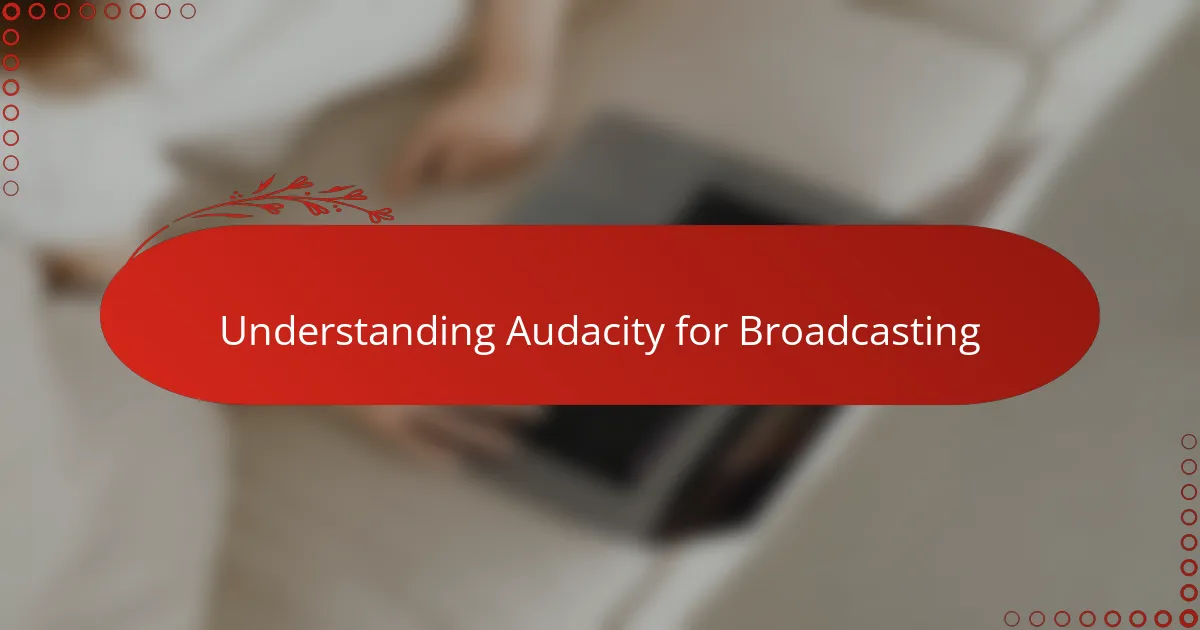
Understanding Audacity for Broadcasting
When I first opened Audacity, I felt a mix of excitement and overwhelm. It’s incredibly powerful yet approachable, which made me wonder—how could one free tool handle so much of the audio magic behind broadcasts? That initial curiosity quickly turned into appreciation as I explored its simple interface tailored for tasks like noise reduction and equalization.
What I learned is that Audacity isn’t just an editor; it’s a gateway to molding sound the way I want listeners to hear it. The software’s multi-track feature lets me layer voices, music, and effects seamlessly, creating a dynamic experience rather than a flat recording. This hands-on control transformed how I think about crafting audio for radio.
Have you ever noticed how a slight hiss or background hum can pull you out of a story? Audacity’s noise removal tool became my best friend in tackling those distractions. It’s these small but essential features that make me confident my broadcasts sound professional—even with modest equipment.
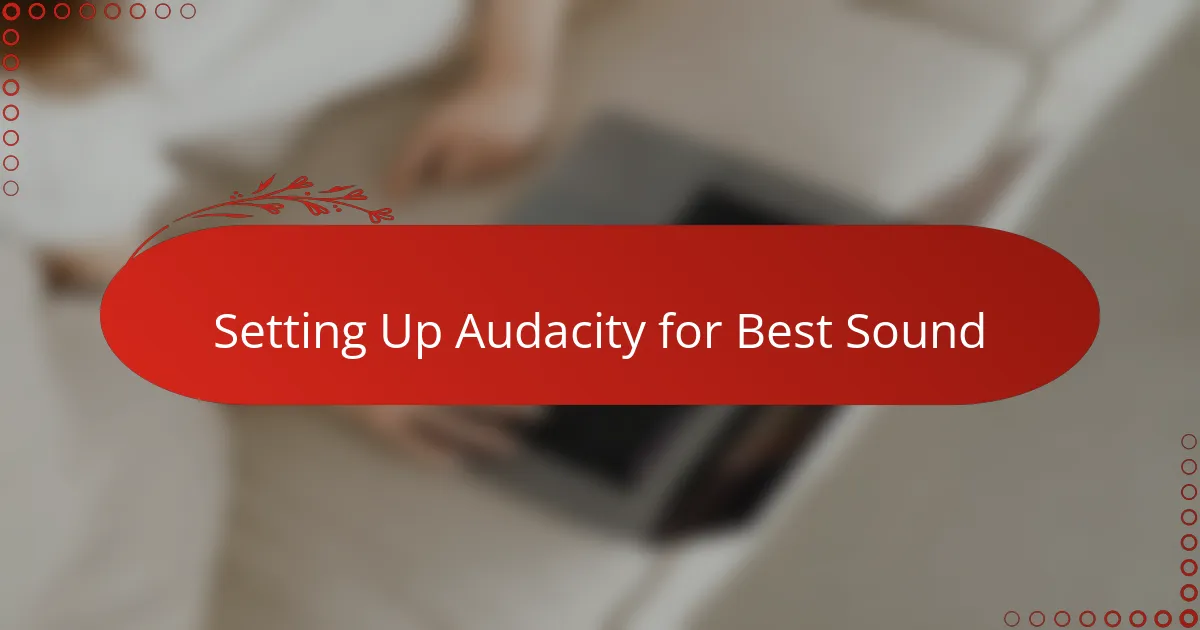
Setting Up Audacity for Best Sound
Setting up Audacity for the best sound quality felt like unlocking a new level in my audio journey. The very first thing I did was customize the recording settings—adjusting the sample rate to 44100 Hz and choosing the right bit depth. These might sound like technical details, but they directly influence how natural and rich the sound feels to the listener.
I also spent time organizing my input sources carefully. When I selected the proper microphone and set the input volume just right, the difference was huge—no more distortion or clipping during recording. It made me realize that even before any editing, the foundation of great sound is laid when you hit record.
Do you know how confusing it can be to navigate all those preferences in Audacity? I sure did at first. But once I tailored the playback device and buffer size, the workflow smoothed out, reducing those annoying lag spikes that can distract during editing. For me, this setup phase shaped the rest of my audio work and set the tone for every broadcast to come.
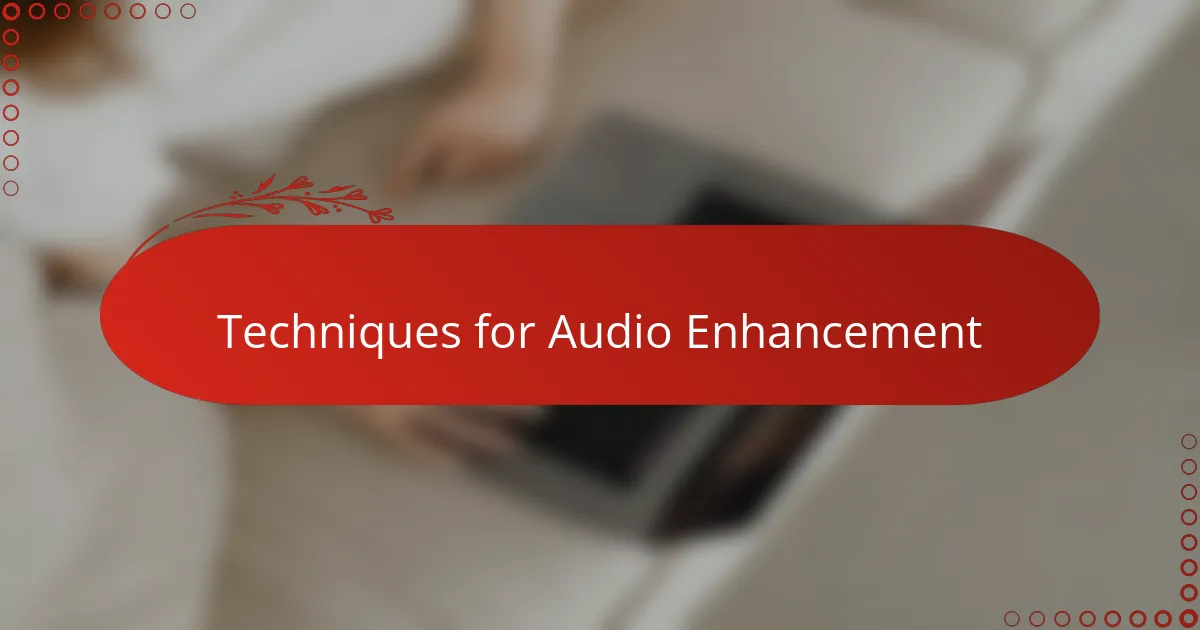
Techniques for Audio Enhancement
When I started using Audacity, one technique that immediately transformed my audio was applying noise reduction. It’s like having a digital eraser for those unwanted background sounds that sneak into recordings—buzzing lights, fans, even distant chatter. Have you ever listened to a broadcast and felt distracted by a constant hiss? Removing that made my audio instantly cleaner and much easier on the ears.
Equalization, or EQ, became another game-changer for me. By tweaking the bass, mids, and treble, I could highlight the warmth of a voice without letting it sound boomy or tinny. It took some trial and error, but hearing the difference in clarity helped me understand how even small adjustments can make a broadcast feel more professional and inviting.
Lastly, compression was something I was initially wary of, but mastering it surprisingly brought consistency to the audio levels. I noticed that without it, quiet parts could disappear, and loud sections would jump out awkwardly. Using compression smoothed those peaks and valleys, making the overall sound flow naturally—kind of like how a good radio host modulates their voice to keep listeners engaged. Have you tried listening without compression? The contrast can sometimes be jarring.
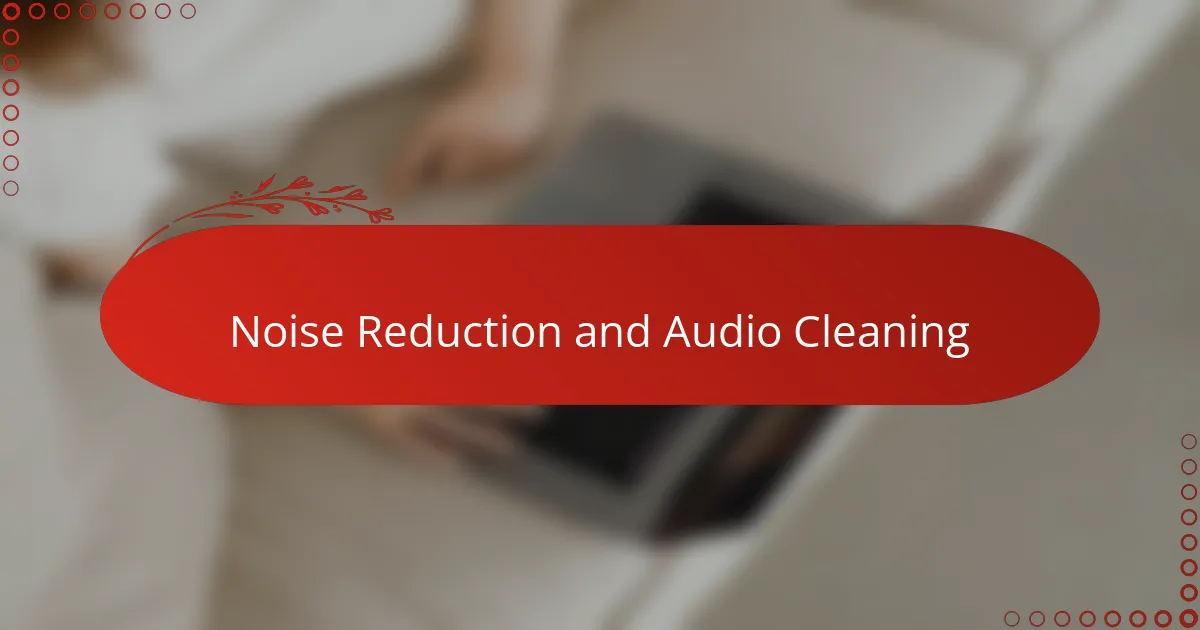
Noise Reduction and Audio Cleaning
Noise reduction in Audacity felt like discovering a secret weapon against the persistent hum and background noise that always seemed to sneak into my recordings. I remember one session where the fan in the studio created a subtle buzz—after using the noise profile and applying reduction, the difference was like night and day. It’s incredible how this tool can isolate and minimize those distractions, letting the main audio truly shine.
Cleaning up audio goes beyond just cutting out noise—it’s about restoring the natural quality of voices and instruments. When working with older clips or recordings from less-than-perfect environments, I often rely on Audacity’s cleaning effects like the click and pop removal to smooth out those tiny imperfections. Have you noticed how even subtle crackles can pull you away from what’s being said? Removing them helps keep the listener fully immersed.
One thing I’ve learned is that noise reduction requires balance. Overdoing it makes the audio sound artificial or hollow, which is just as distracting as the noise itself. So, I usually start conservatively, then tweak settings while listening closely. This careful approach ensures the broadcast remains warm and authentic—something every radio host should strive for.
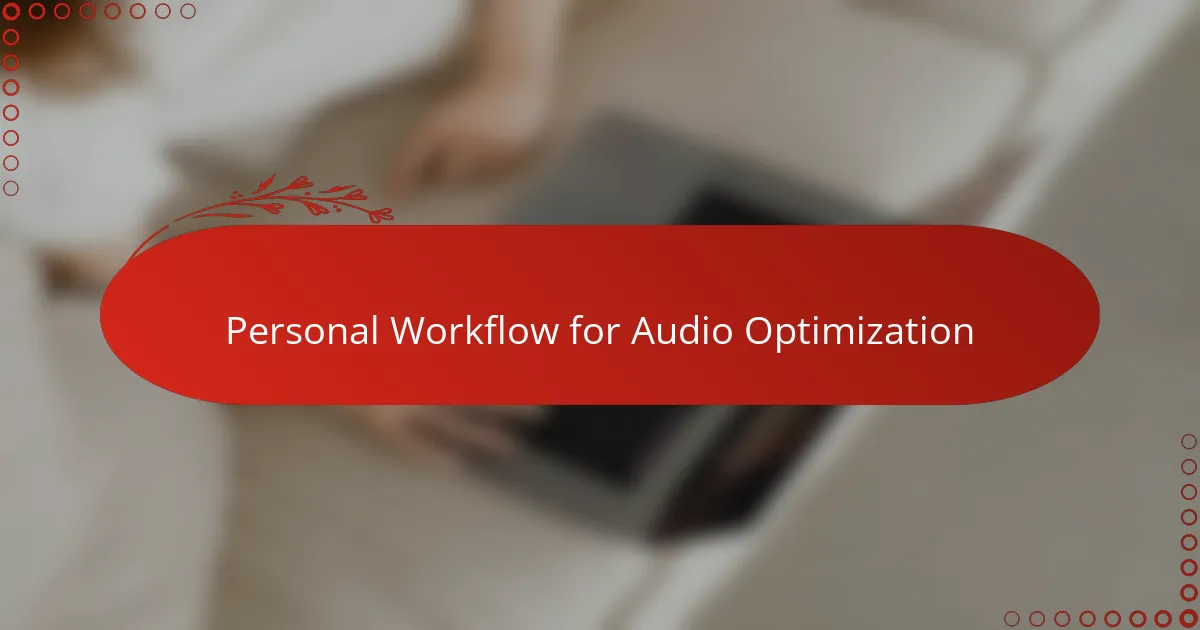
Personal Workflow for Audio Optimization
When it comes to optimizing audio with Audacity, my workflow begins with a ritual of listening through the raw recording several times. I find that this step is crucial—it lets me identify the subtle imperfections that a quick glance might miss. Have you ever noticed how a quiet background hiss only becomes apparent after you’ve taken a short break and come back with fresh ears? That’s exactly the kind of detail I hunt for before even touching the editing tools.
Next, I move into a structured editing process. I usually start by applying noise reduction gently, making small adjustments and then replaying the track to check how natural it still sounds. It took me a while to trust that less can be more here; early on, I was overzealous and ended up with audio that felt lifeless and robotic. Now, I aim to strike a balance between clarity and warmth, because that subtle authenticity makes listeners feel like they’re right there in the studio with you.
Finally, I like to combine EQ tweaks and compression in a way that complements the speaker’s voice and the content’s mood. Sometimes I ask myself, “Is this segment meant to be intimate or energetic?” That question guides how I adjust the frequencies and dynamics. Over time, this approach has helped me create broadcasts that aren’t just heard but felt, making the listener’s experience more engaging and enjoyable.
